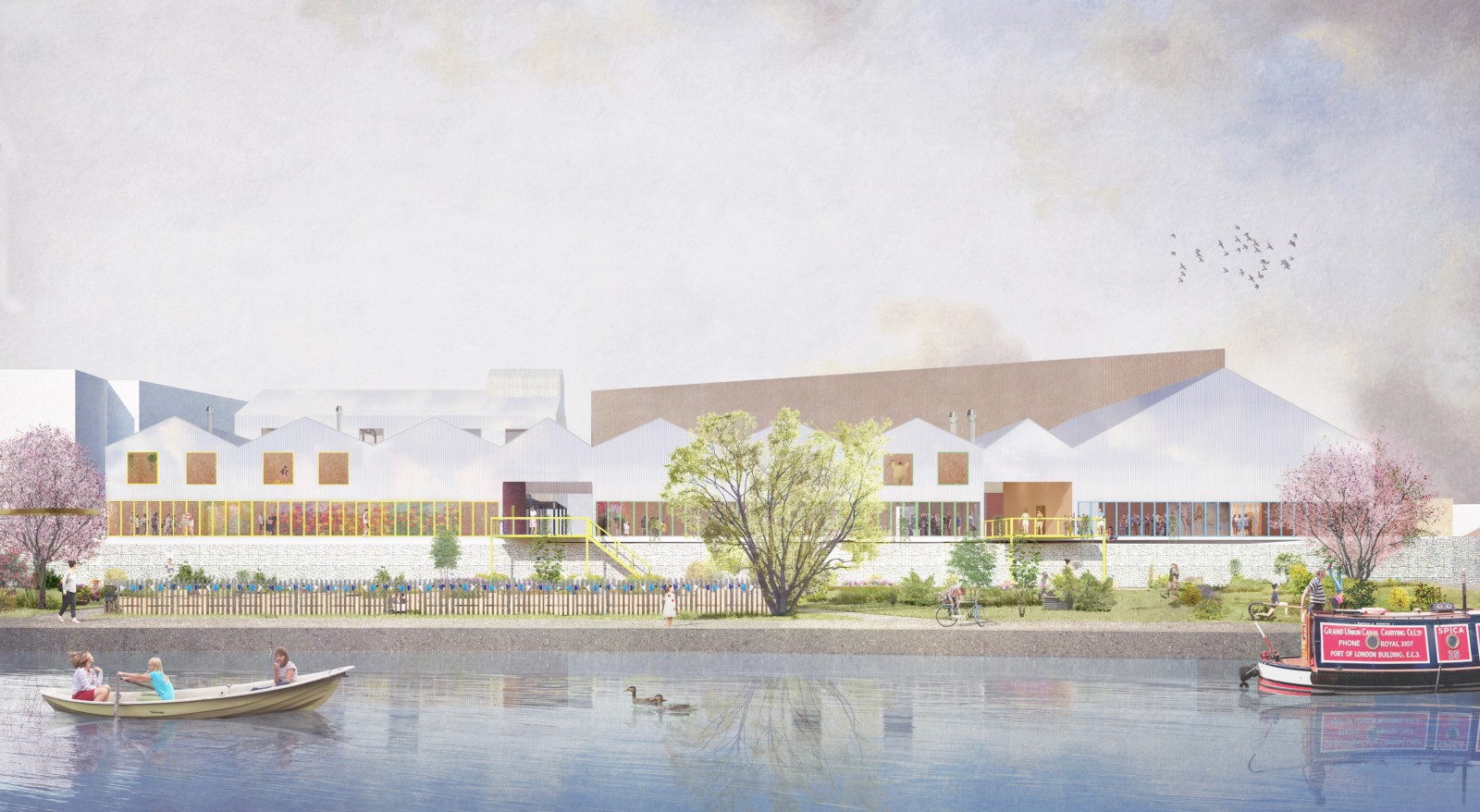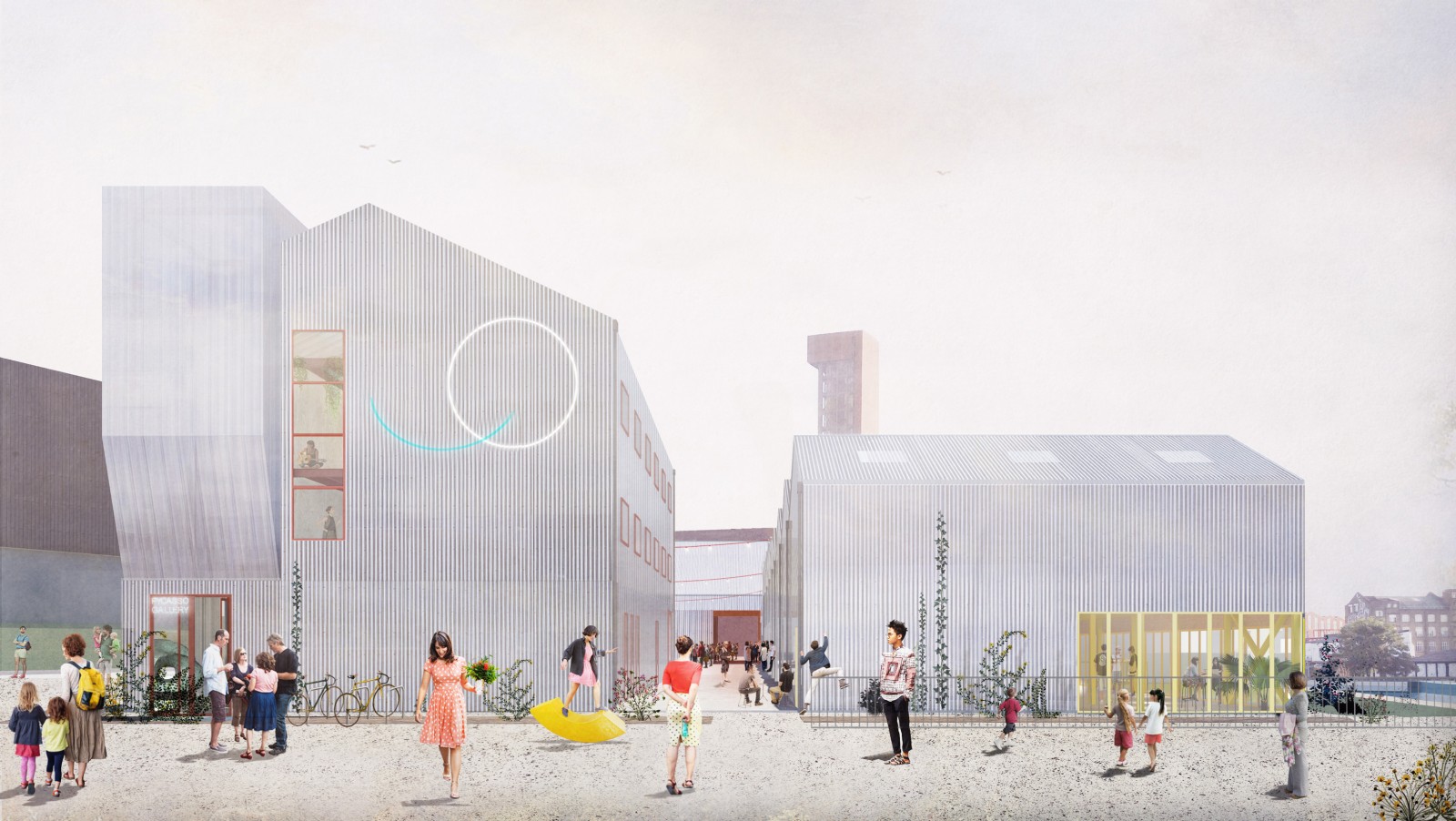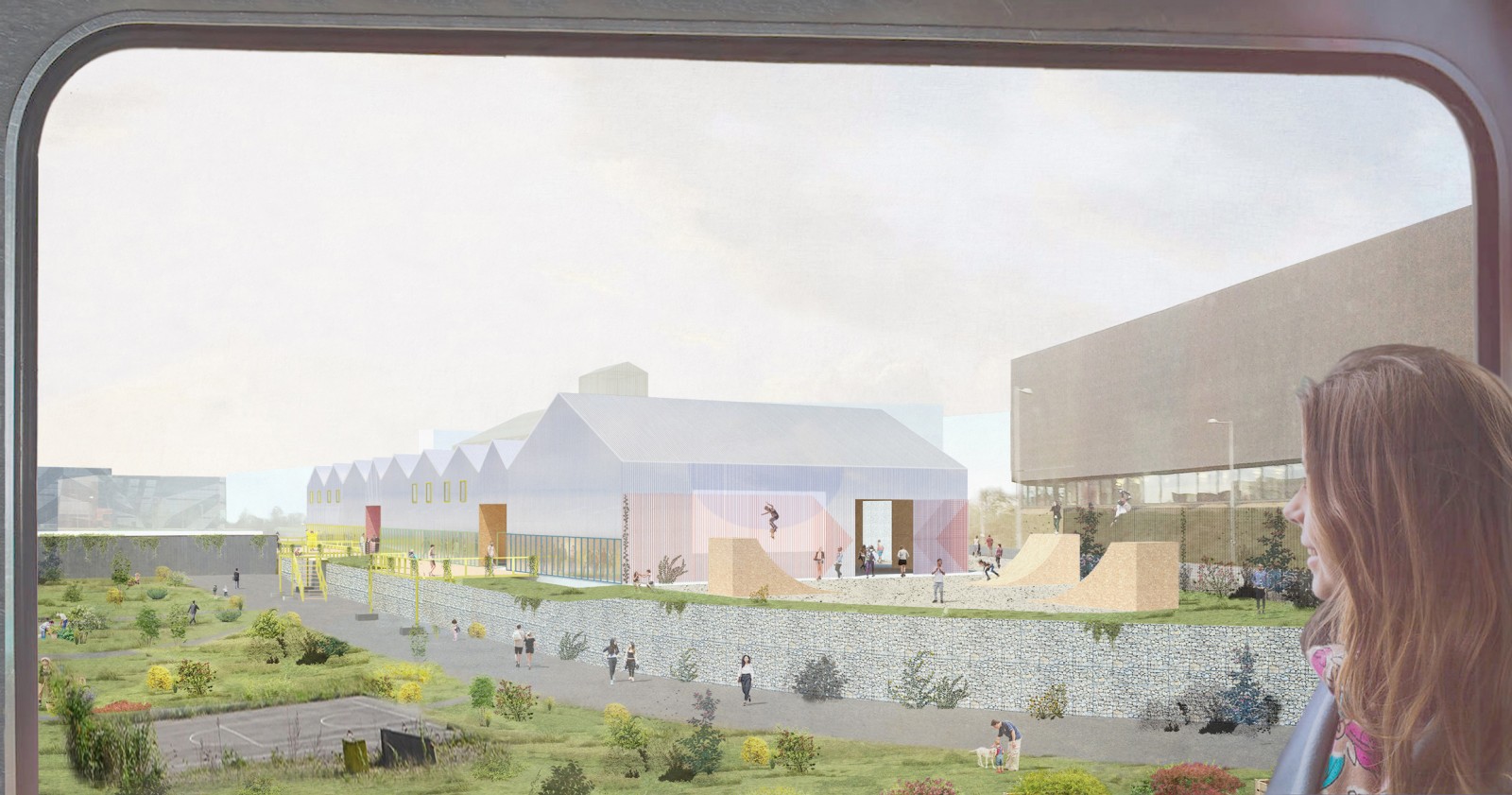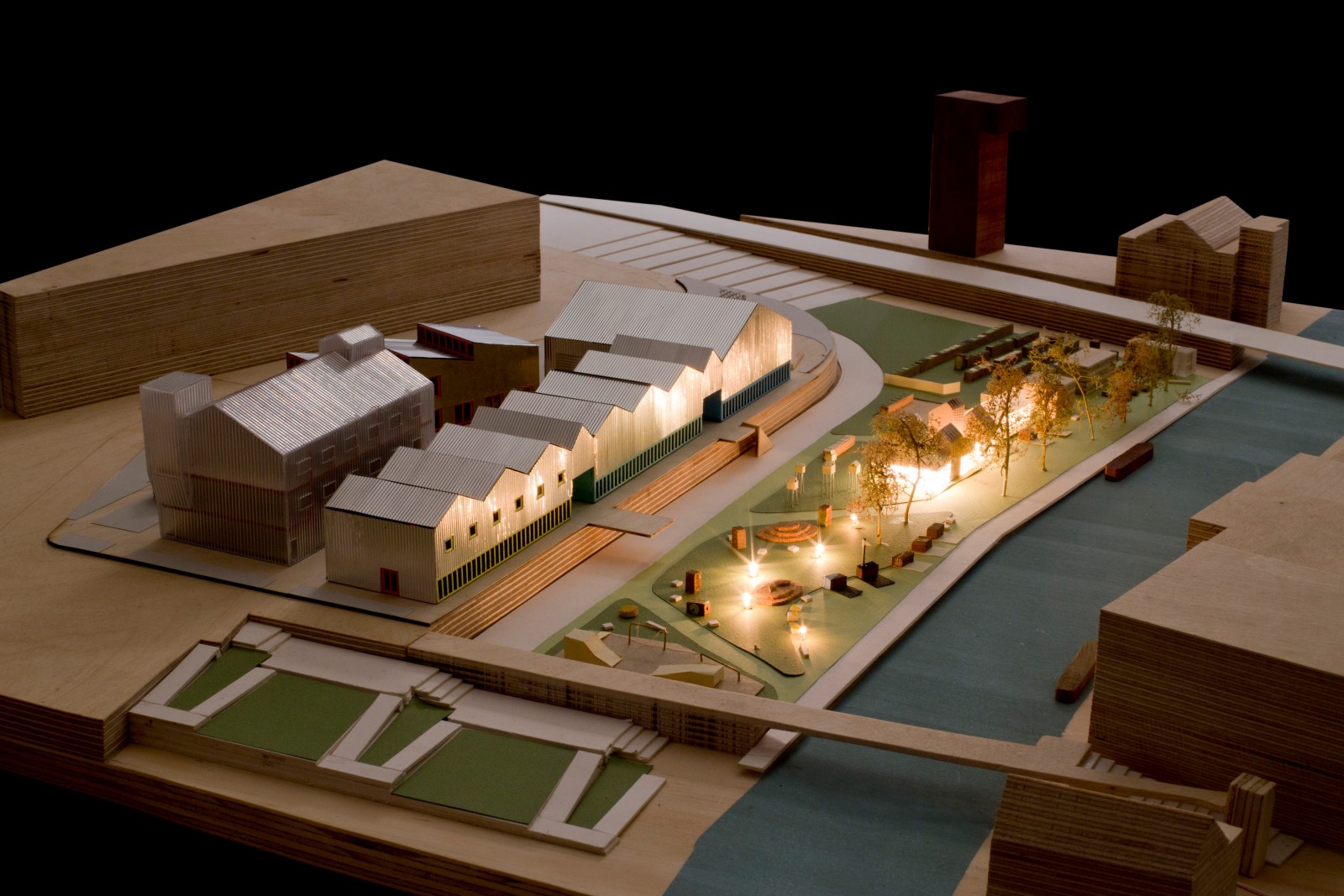Hackney Bridge is a meanwhile (or short-term) project to provide incubator space for a range of people and organisations, combined with public facing elements such as an event space and food hall, provided across five buildings arranged around a central yard. The site will eventually be developed as part of the Olympic Legacy Plan for housing, but the interim period of 12 years will allow the site to support start-ups and offer opportunities for local people on the Olympic Park and surrounding neighbourhoods.
Hackney Bridge is the third meanwhile project we have designed for Make Shift, following on from Pop Brixton and Peckham Levels. For many reasons, this was the most challenging of the three sites, but we had the learning and experience of the former to draw from. Meanwhile thinking focuses the mind and our approach is thus to try to do the most with the least; the least funds, materials, resources and time.
Warehouses provided a great starting point for thinking about how to design new spaces for makers. They are solid and (almost) indestructible. They have direct access to the street or yard. And the acoustics tend to be good. As London has flourished and pressure on land has intensified, these very functional spaces are under threat. And now Hackney Bridge has given us a chance to explore these concerns in a very concrete way. The site is sandwiched between Hackney Wick and the canal on one side, and the former Olympic site on the other.

We visited the existing makers and artists here to see how they work and what kind of spaces they need. There were no surprises. The concrete-framed warehouses built out of brick serve them well, with large volumes being sliced and diced into low-tech, loose-fit spaces and capacious goods lifts. The external yards seemed purpose-built for their needs, too. They were perfect for deliveries, storage, and working outside by day. And at other times they became gathering and performance spaces.

This research resulted in the proposal of five new buildings with a range of uses and scales of space centred around one main public yard and the creation of direct access from the canal towpath through our site; a new open campus.
The three public-facing buildings are organised along the edge of an existing retaining wall and use a simple factory roof profile to create a ‘quayside’ to the canal. The two workspace buildings sit between this new row and the existing Copper Box Arena.
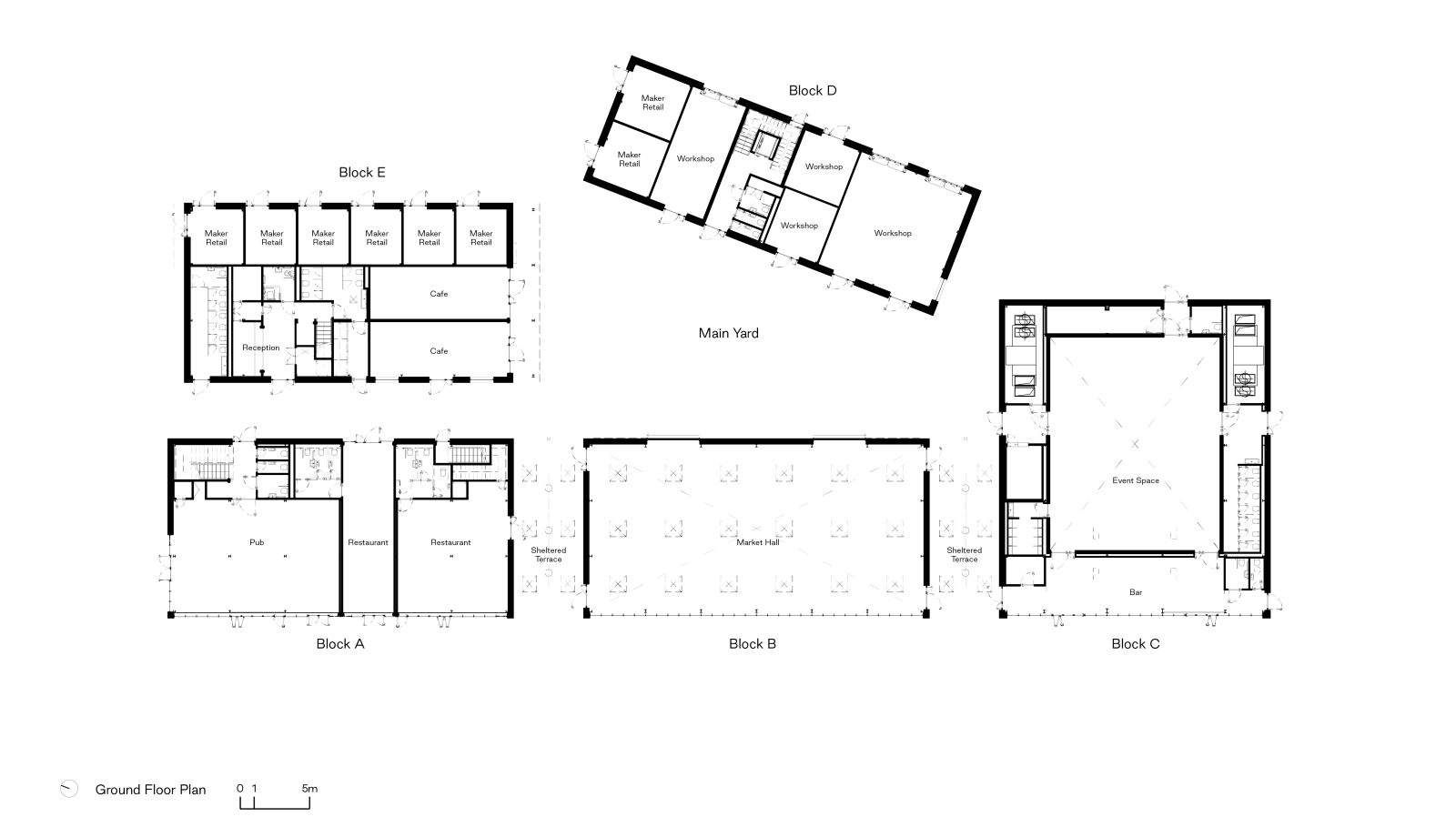

The five buildings forming Hackney Bridge share many similarities, but some key differences. The key similarity is the expressed steel frame that all five utilise. The three along the quayside have been connected together (as they are all public) via linking roofs, allowing people to walk between buildings without getting wet. They are also already offering space for pop-up stalls and bars at events. These three buildings share the same steel profiled cladding to create continuity, with each building differentiated through different window frame colours, proportions and disposition. The event space is a box within a box construction to provide acoustic isolation, the market hall is unheated and the block nearest the bridge is insulated and heated, with food and drink at ground floor and workspace above.
The black timber clad building houses maker spaces (which we think of as akin to railway arches in typology) at ground floor level, with co-work space above. The maker spaces have a fenced yard to the rear to allow deliveries and safe outdoor making. Plywood has been used extensively internally as a finish to add warmth and speed up construction (as opposed to dry lining).
The studio block is clad in a mixture of corrugated steel and polycarbonate panels. Internally we have used OSB3 and plywood left exposed, or left dry-lined for tenants to decorate as they wish. Self-finished materials were used throughout the project for speed, cost and durability. The concrete ground slabs, for instance, were simply polished and left exposed as the final finish.



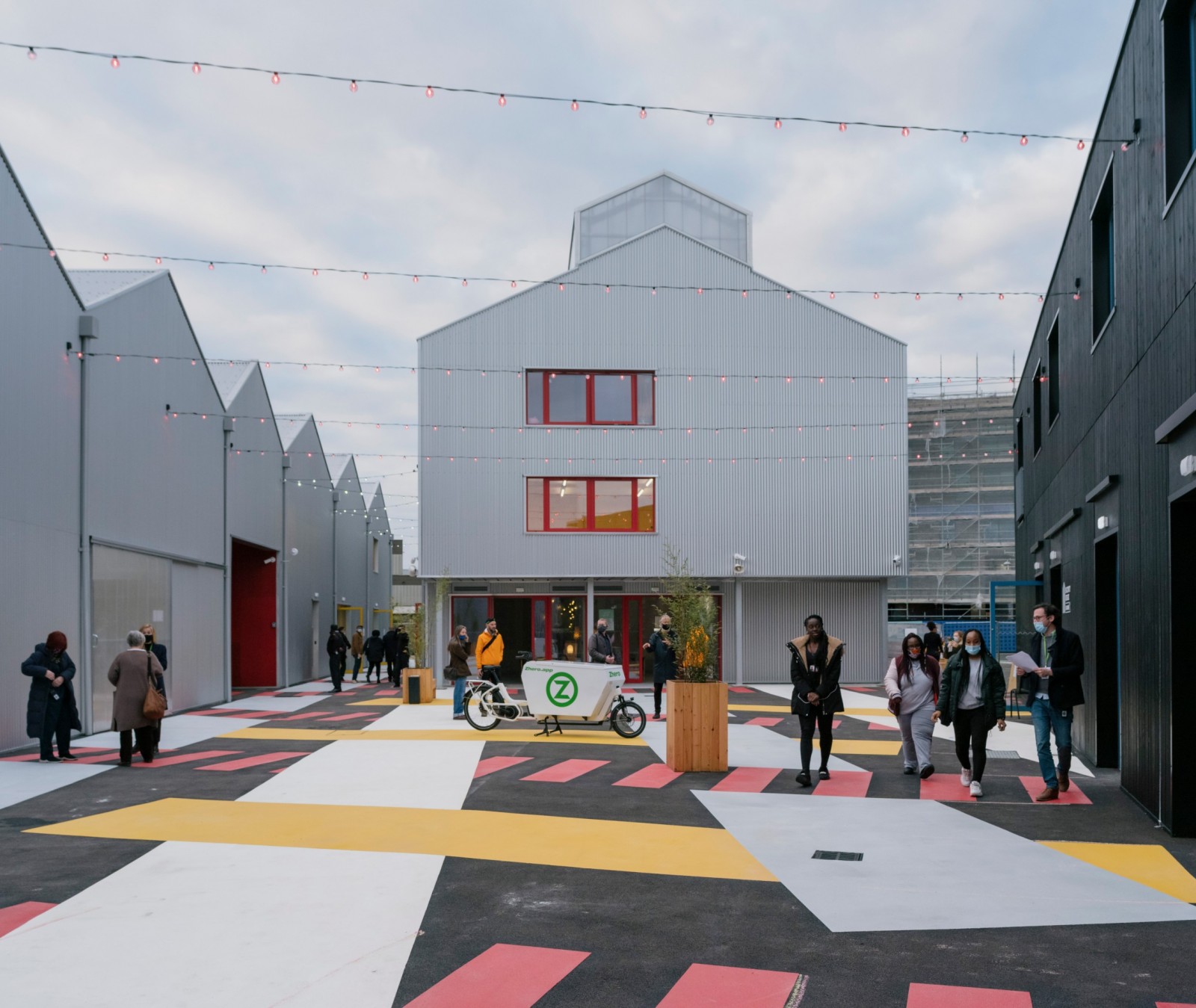
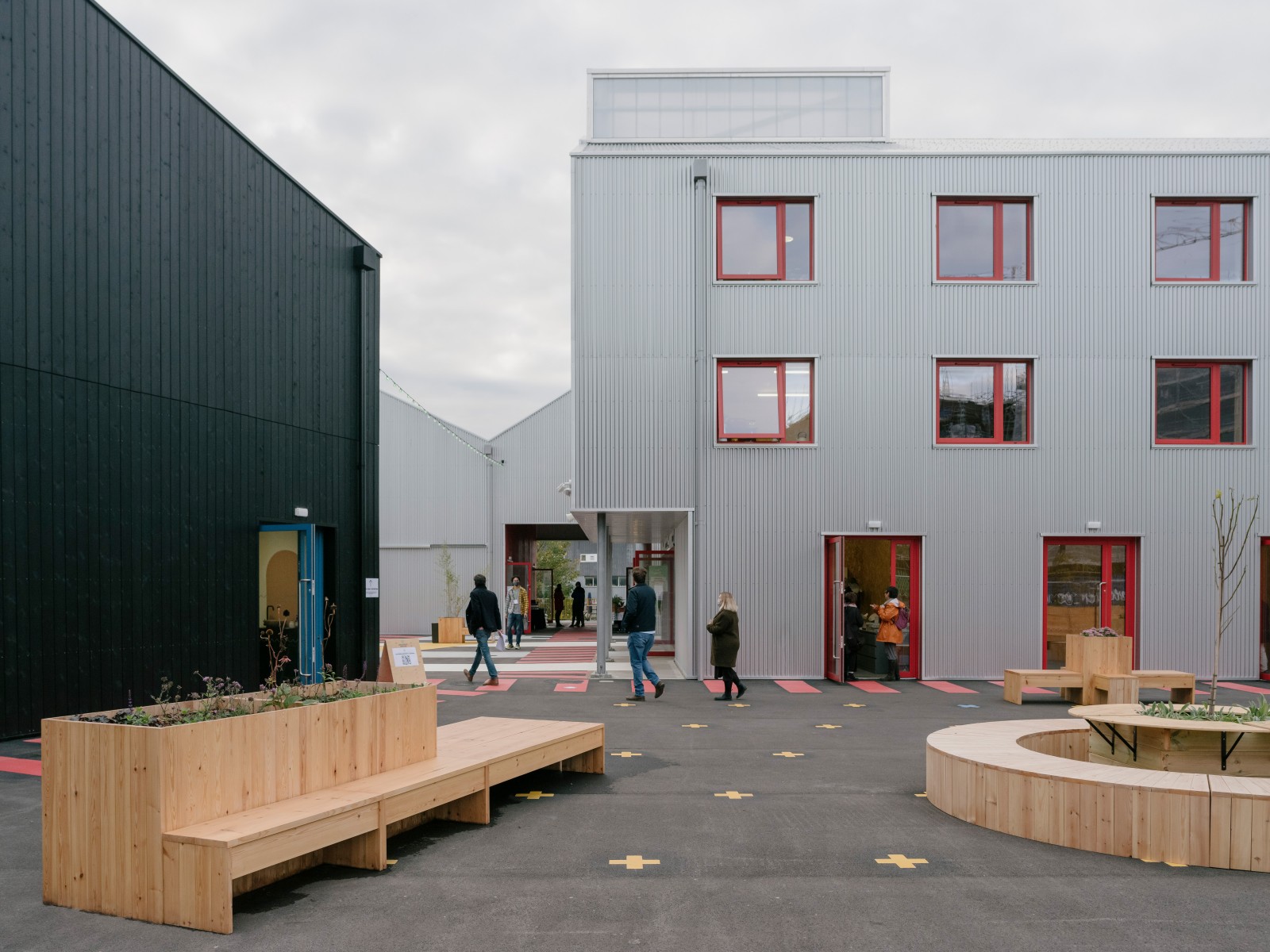

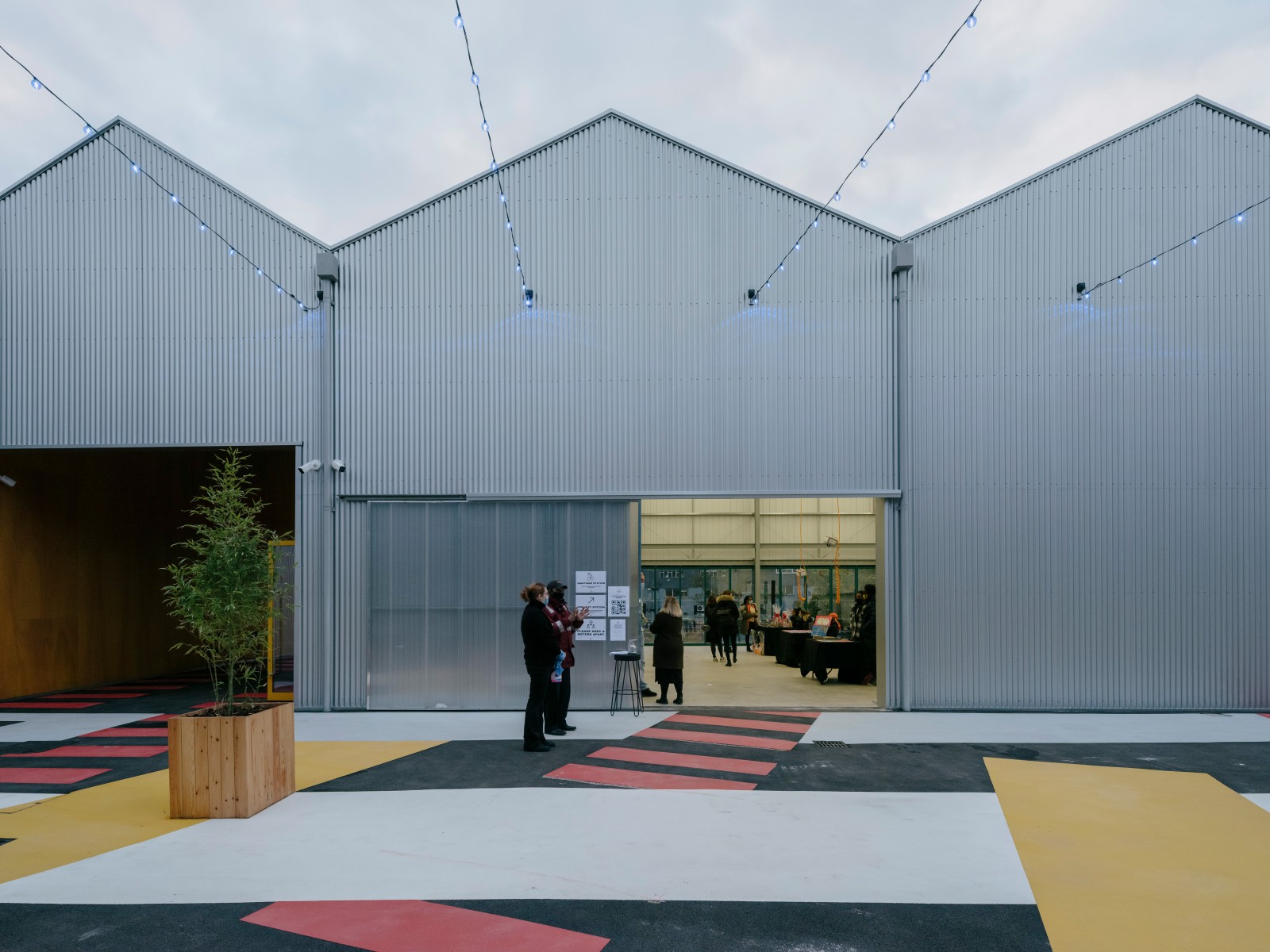

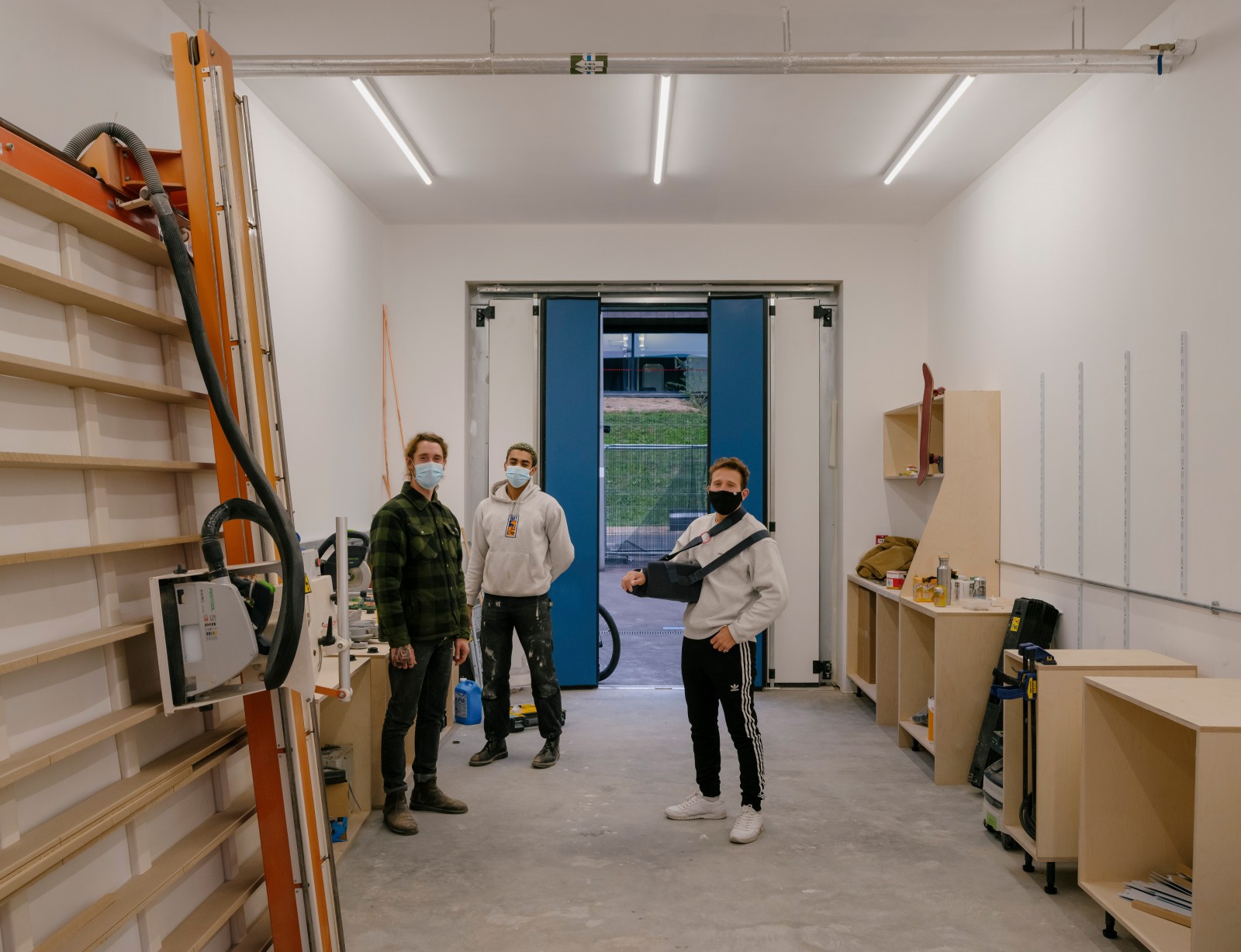

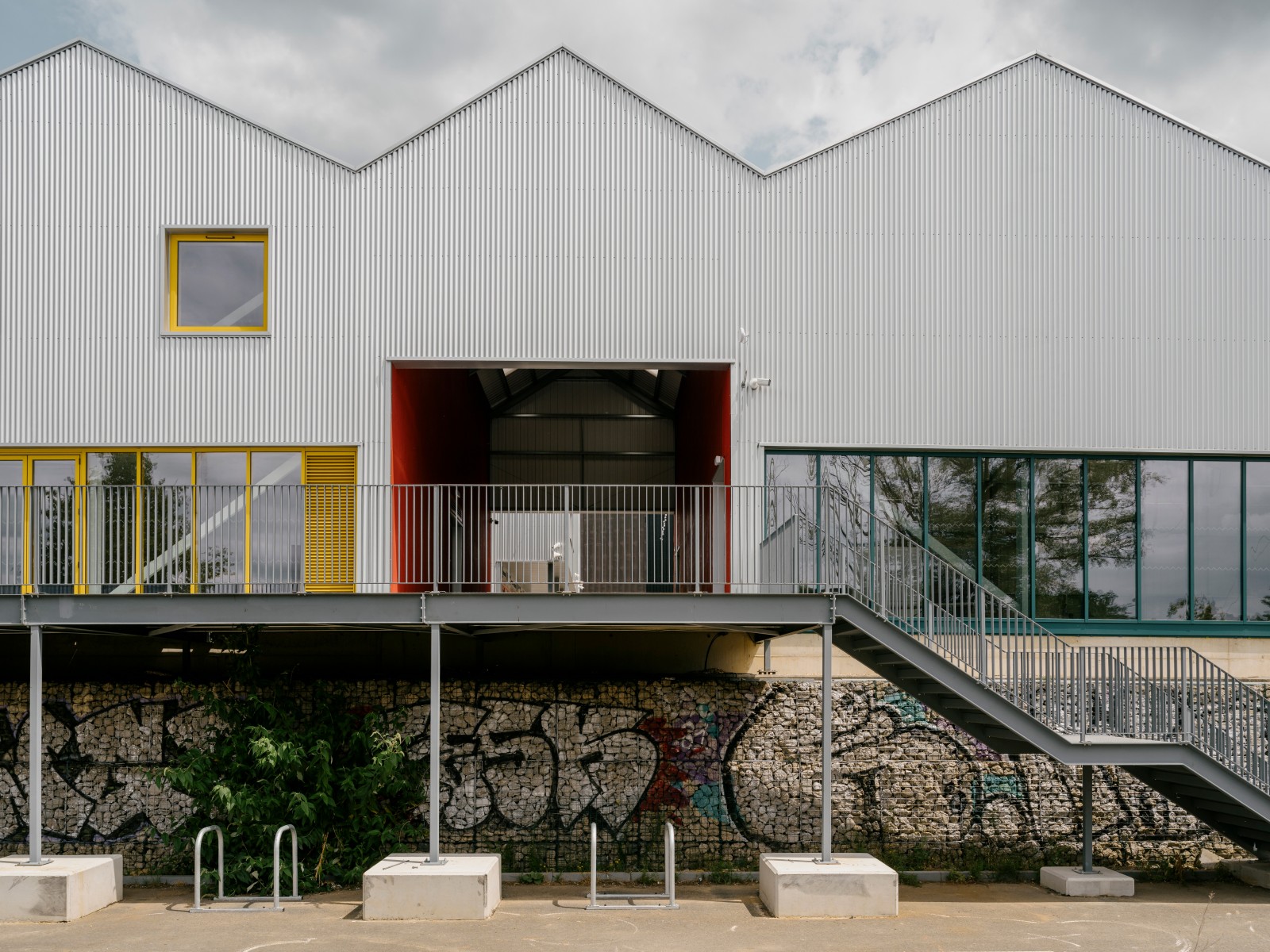
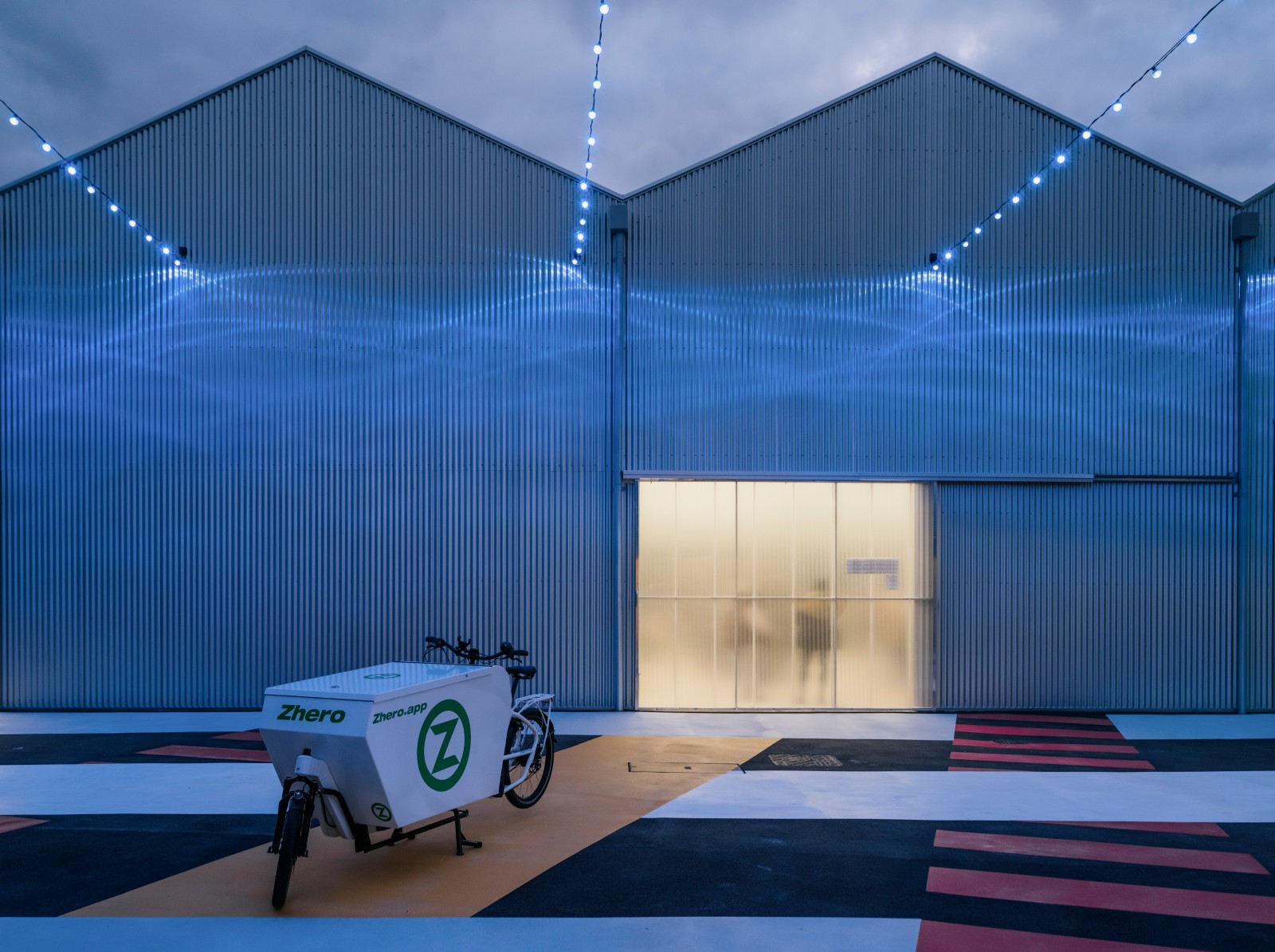

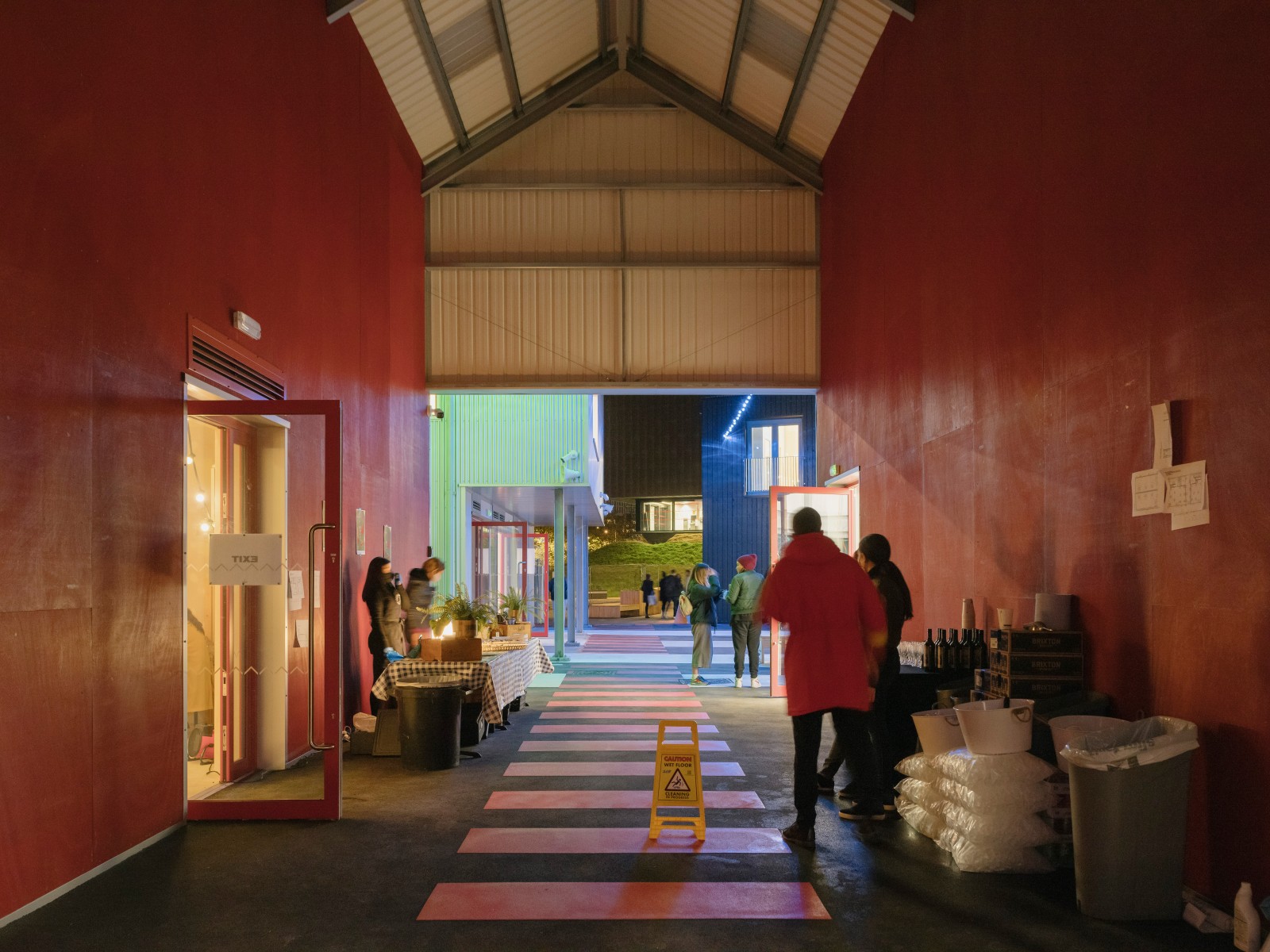
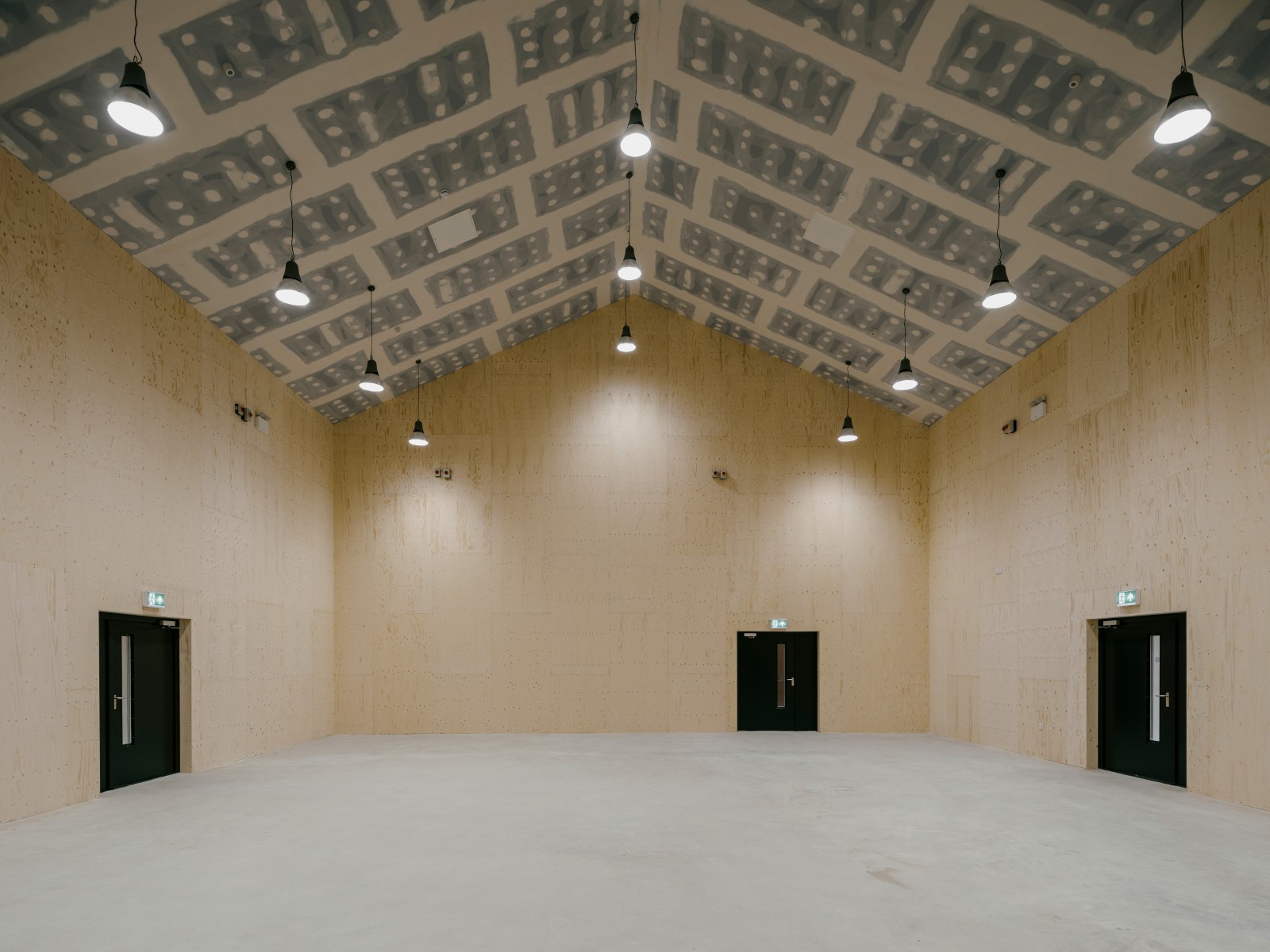


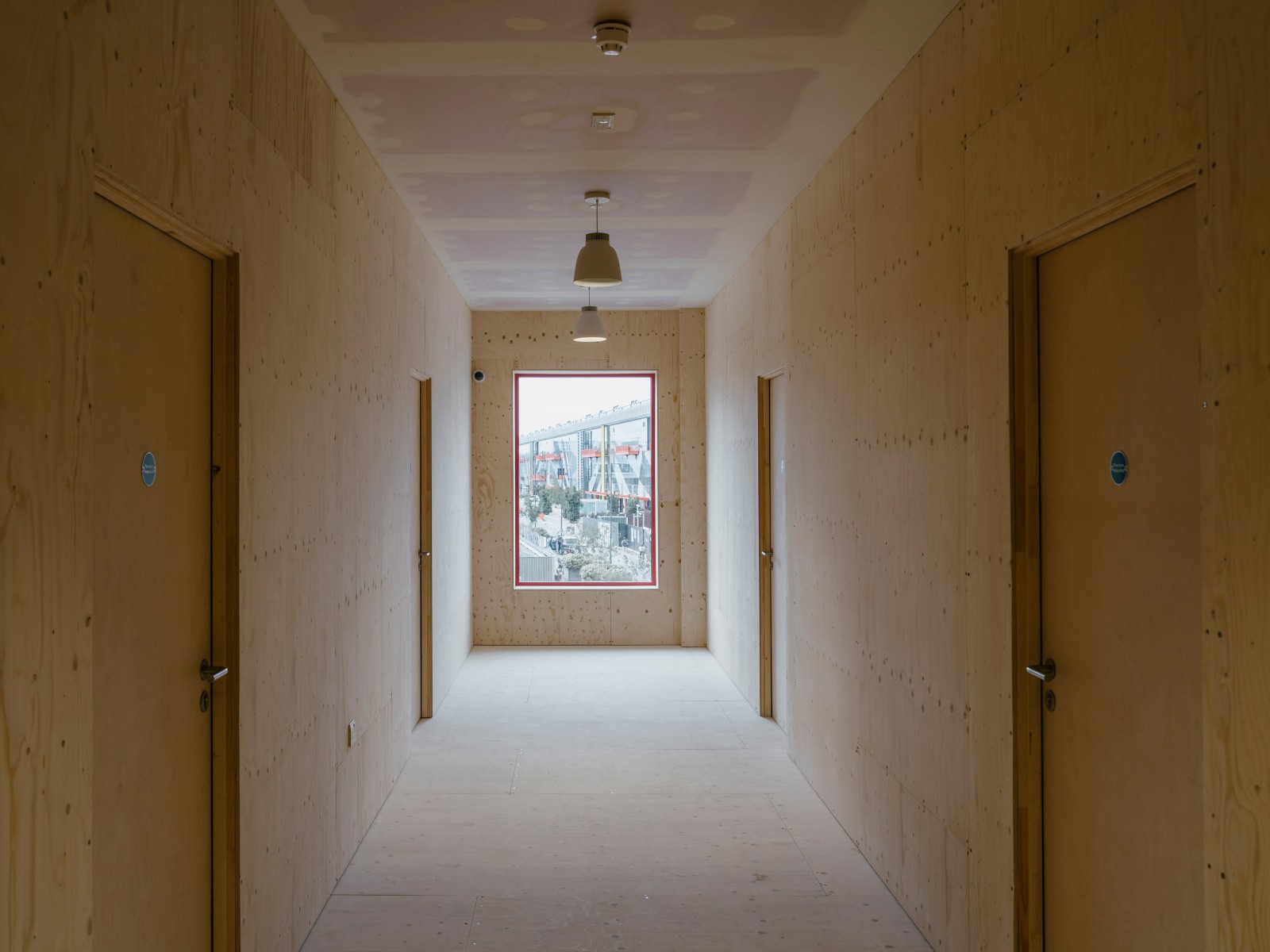

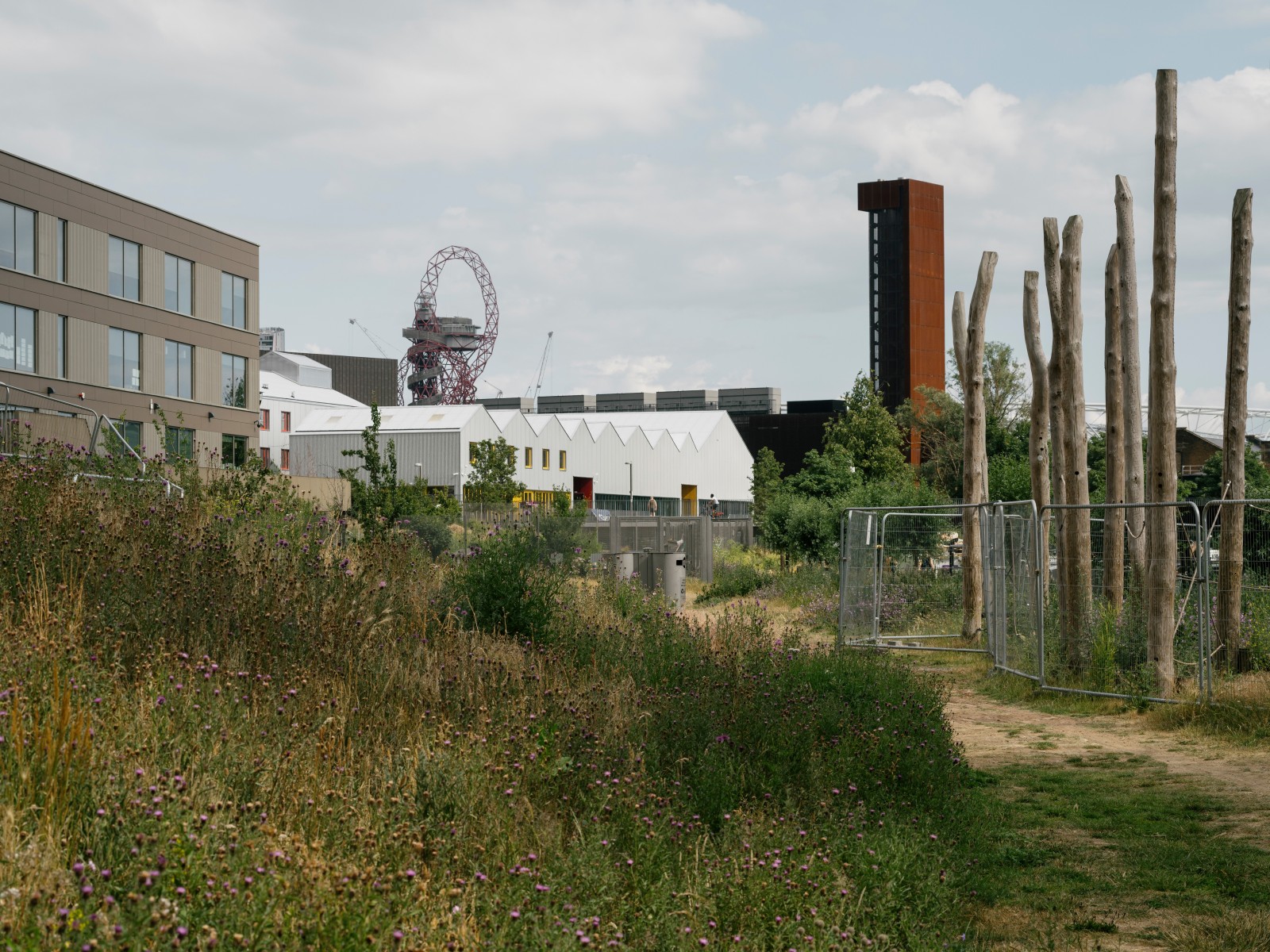
How we did it:
• We worked with Make Shift, our friends from Peckham Levels and Pop Brixton.
• We approached the site as a micro-city.
• We used old forms to design new spaces.
• We organised the buildings into heated and unheated spaces dependent on use.
• We utilised self-finished industrial materials to maximise speed, cost and durability.
• We designed each building to be easily dismantled to allow them to have future lives beyond the site.
What you’ll find:
• Art studios and maker-units
• Co-working spaces
• Interesting public spaces
• Cafés
• Bars
• Event venues
• Exhibition spaces
• And a thriving yard life between the buildings
Client:
Make Shift
Completed:
2020
Photography:
Tim Crocker
Key Collaborators:
London Legacy
East Wick + Sweetwater
The Collective
Glencar Construction
Structure Workshop
Genever & Partners
Studio Hatcham – Landscape Design
Studio Jutta Goessl – External Furniture
